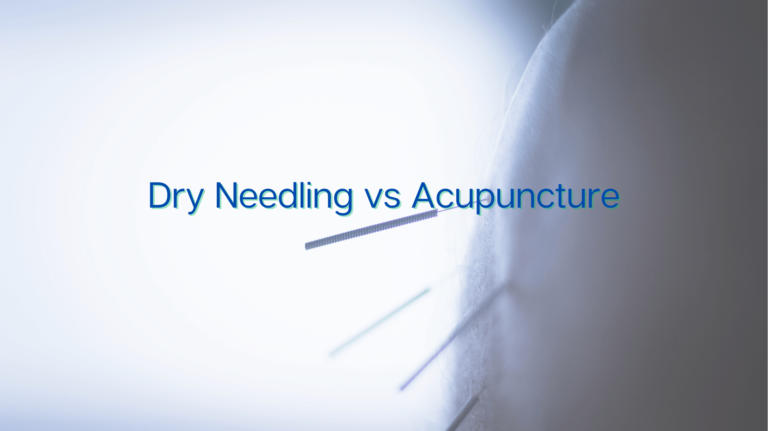Reading Time: 4 minutes
If you’re considering dry needling to address muscle pain, joint stiffness, or movement impairments, one of your first questions is likely – how much does it cost? The prices for dry needling can range quite a bit depending on your location, provider, insurance coverage, and length of treatment.
How much does Dry Needling Cost?
Most patients require multiple dry needling sessions throughout treatment. But first, how much does each appointment usually cost?
Across the United States, prices average $75 to $125 per session when paying out-of-pocket. However, the quotes are ranging from $50 on the low end up to $175 per treatment in major metropolitan areas.
Some factors that affect per-session costs are:
- Geographic location – Major cities like New York and San Francisco tend to have higher fees.
- Provider type – Physical therapists often charge slightly less than acupuncturists or chiropractors.
- Office overhead – Providers in downtown clinics or hospitals may bill more.
- Session length – Longer appointments over an hour cost more.
- Years in practice – Experienced practitioners sometimes charge higher rates.
To get an idea of costs in your area, try checking with local physical therapy clinics, chiropractors, and licensed acupuncturists that offer dry needling. Compare several quotes to find the best value.
And remember – higher session fees don’t necessarily mean better treatment quality. Focus on providers’ skills and expertise rather than just the price tag.
Factors That Impact Overall Dry Needling Costs
While each session ranges from $75-$125 typically, the total costs depend on several additional factors:
Number of Treatments
Most patients need 6 to 12 sessions over weeks or months to see full results. Some conditions may require over 20 treatments for complete resolution. More complex issues and longer-term pain often need an extended needling regimen.
Discuss upfront with your practitioner the anticipated visits needed to meet your treatment goals. Start with 1-2 sessions per week to gauge your initial response, then adjust the frequency up or down based on your incremental progress.
Treatment Duration
Some practitioners perform shorter 30-minute dry needling sessions focused on a few target areas. However many experts believe 60-minute appointments lead to better outcomes for complex muscle dysfunction.
Longer session times allow the provider to methodically needle multiple trigger points and also include manual therapy techniques like massage. However, hourly appointments cost about 25% more than a 30-minute visit.
Discuss the ideal session length to meet your treatment objectives while considering costs. Brief sessions can help control expenses for mild or uncomplicated issues.
Bundled Packages
Many dry-needling providers offer bundled packages that include a set number of treatments at a discount. These packages help to budget in advance while incentivizing me to complete the full recommended treatment regimen.
Ask your provider if they offer package deals for multiple dry needling sessions to potentially lower your overall costs. Just confirm package rates are cancelable if you end up needing more or fewer visits.
Does Insurance Cover Dry Needling Costs?
One way to reduce your out-of-pocket expenses for dry needling is to have the treatment covered by insurance. But there are a few caveats:
- Dry needling alone is not billable – It must be combined with manual therapy or other physical medicine procedures to qualify for reimbursement.
- Physical therapists have the most coverage – PTs can bill dry needling under codes for physical medicine services.
- Varying coverage by insurer – Some plans cover dry needling fully or partially, while others exclude it. Self-funded employer plans also differ.
Ask your provider to verify exactly what dry needling services your policy covers beforehand. Be aware of applicable deductibles, copays, and session limits when estimating your potential out-of-pocket expenses. Appeal any claim denials if dry needling is not initially covered.
If insurance won’t pay at all, inquire if your provider can offer discounted cash rates or package deals on multiple prepaid sessions to help control your costs.
How to Reduce Dry Needling Costs?
If dry needling costs are prohibitive even with insurance, here are some tips that will help you save money:
- Choose PT clinics over private acupuncture or chiropractic offices which tend to cost more.
- Seek providers offering lower introductory rates or sliding scale fees.
- Ask about discounts for paying session costs upfront in a package versus individually.
- See if a nearby teaching college with a physical therapy or acupuncture program offers reduced-cost clinical appointments.
- Only pursue the number of treatments truly needed to meet your goals to avoid overspending on unnecessary sessions.
- Use your insurance plan’s online directory to find the most affordable in-network providers.
- Maintain your health through exercise, reducing pain medication dependence.
With a bit of savvy self-advocacy, dry needling can be made affordable even for those on a budget or with limited insurance coverage.
💡Also Read, Is Dry Needling Legal?
Is Dry Needling Worth the Cost for You?
While dry needling involves an out-of-pocket investment, you may find the benefits experienced to be invaluable if you are suffering from chronic neuromuscular pain. When traditional physical therapy alone plateaus, adding dry needling can help you finally overcome those stubborn muscle knots and persistent pain patterns.
For example, if you are dealing with chronic back pain that has not resolved with other conservative treatments, the reductions in pain and improvements in mobility you gain from dry needling may be worth the financial costs involved.
The potential improvements in function and relief from ongoing pain make dry needling financially worthwhile for many patients, especially those who have struggled with chronic neuromuscular conditions using other modalities alone. Discuss your specific health circumstances with your provider to determine if dry needling is likely to provide you benefits that justify the costs.

Chris Hanks is an experienced physical therapist based in Austin, Texas. He earned his Doctor of Physical Therapy degree from the University of Texas at Austin in 2005 after completing his Bachelor of Science in Kinesiology in 2002. Dr. Hanks has been a licensed PT in Texas since 2005. He began his career at Central Texas Rehabilitation Hospital before moving to Austin Sports Medicine Center in 2010. In 2015, Dr. Hanks opened his own clinic, Capital City Physical Therapy, where he continues to treat patients.






